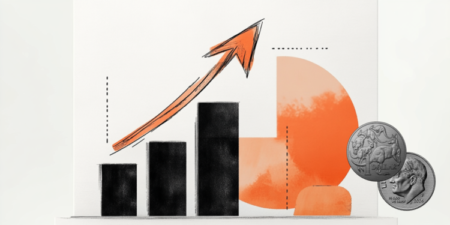- The Japanese Yen retreats after touching a two-month high against the USD on Friday.
- The narrowing US-Japan rate differential should limit losses for the lower-yielding JPY.
- Subdued USD price action might cap the USD/JPY pair ahead of the US NFP report.
The Japanese Yen (JPY) attracts some intraday sellers in reaction to cautious remarks from the International Monetary Fund (IMF), saying that further Bank of Japan (BoJ) rate hikes should be gradual and flexible. This, in turn, assists the USD/JPY pair to rebound from sub-151.00 levels or the lowest since December 10 touched during the Asian session on Friday. Any further JPY downfall, however, seems elusive in the wake of the growing acceptance that the BoJ would keep tightening its policy.
In fact, comments from a senior BoJ official suggest the Japanese central bank is maintaining its stance to steadily push up borrowing costs. The resultant narrowing of the rate differential between the BoJ and other major central banks, including the Federal Reserve (Fed), should continue to underpin the lower-yielding JPY and help limit losses. Apart from this, subdued US Dollar (USD) price action might contribute to capping the USD/JPY pair ahead of the US Nonfarm Payrolls (NFP) report.
Japanese Yen drifts lower after cautious remarks from the International Monetary Fund
- The International Monetary Fund said on Friday that Japan should be on alert for any spillover effects from rising volatility in foreign markets that could affect liquidity conditions for its financial institutions.
- The IMF also warned Japan needs to be vigilant about monitoring any fallout from the Bank of Japan’s rate hikes, such as an increase in the government’s debt-servicing costs and a possible jump in corporate bankruptcies.
- Kazuhiro Masaki, Director General of the BoJ’s monetary affairs department, said on Thursday that the central bank will continue to raise interest rates if underlying inflation accelerates toward its 2% target as projected.
- Japan’s Economy Minister Ryosei Akazawa told the parliament that the government’s focus would be to eradicate a deflationary mindset with a goal to boost minimum wages and take measures to encourage firms to raise wages.
- This comes on top of the hawkish BoJ Summary of Opinions released on Monday, which showed that policymakers discussed the likelihood of raising interest rates further at the January meeting and continued to boost the Japanese Yen.
- Adding to this, data released this week showed that Japan’s inflation-adjusted real wages rose 0.6% year-on-year in December, marking the second consecutive monthly gain and backing the case for further tightening by the BoJ.
- The yield on Japan’s 10-year government bond remains near a 14-year high, while the benchmark 10-year US Treasury yield hangs near its lowest level since December amid expectations that the Federal Reserve would stick to its easing bias.
- US Treasury Secretary Scott Bessent said on Thursday that President Donald Trump’s administration was not particularly concerned about the Fed’s trajectory on interest rates and that the focus is on bringing down 10-year Treasury yields.
- Chicago Fed President Austan Goolsbee noted that the appearance that inflation has stalled is largely due to base effects and that the central bank needs to be mindful of overheating and deterioration, but things are largely going well.
- Separately, Dallas Fed President Lorie Logan said that inflation progress has been significant, but the US labor market remains far too firm to push the central bank into rate cuts any time soon. This, however, does little to impress the US Dollar bulls.
- That said, traders opt to lighten their bets and move to the sidelines ahead of the release of the US Nonfarm Payrolls (NFP) report, prompting an aggressive intraday short-covering move around the USD/JPY pair on Friday.
USD/JPY bears have the upper hand; 152.50 confluence support breakdown in play
From a technical perspective, this week’s breakdown below the 152.50-152.45 confluence – comprising the 100- and the 200-day Simple Moving Averages (SMAs) was seen as a key trigger for bearish traders. Moreover, oscillators on the daily chart are holding deep in negative territory and are still away from being in the oversold zone. This, in turn, suggests that the path of least resistance for the USD/JPY pair remains to the downside. Hence, any subsequent move up could be seen as a selling opportunity and remain capped near the 152.00 mark. Some follow-through buying, however, could lift spot prices further toward the next relevant hurdle near the 152.50-152.45 support-turned-resistance en route to the 153.00 round figure.
On the flip side, the 151.00 mark now seems to have emerged as an immediate support. A sustained break and acceptance below the said handle could drag the USD/JPY pair further towards 150.55-150.50 support. The downward trajectory could extend further towards the 150.00 psychological mark, below which spot prices could slide to the 149.60 horizontal support before aiming to test the 149.00 mark and the December swing low, around the 148.65 region.
Bank of Japan FAQs
The Bank of Japan (BoJ) is the Japanese central bank, which sets monetary policy in the country. Its mandate is to issue banknotes and carry out currency and monetary control to ensure price stability, which means an inflation target of around 2%.
The Bank of Japan embarked in an ultra-loose monetary policy in 2013 in order to stimulate the economy and fuel inflation amid a low-inflationary environment. The bank’s policy is based on Quantitative and Qualitative Easing (QQE), or printing notes to buy assets such as government or corporate bonds to provide liquidity. In 2016, the bank doubled down on its strategy and further loosened policy by first introducing negative interest rates and then directly controlling the yield of its 10-year government bonds. In March 2024, the BoJ lifted interest rates, effectively retreating from the ultra-loose monetary policy stance.
The Bank’s massive stimulus caused the Yen to depreciate against its main currency peers. This process exacerbated in 2022 and 2023 due to an increasing policy divergence between the Bank of Japan and other main central banks, which opted to increase interest rates sharply to fight decades-high levels of inflation. The BoJ’s policy led to a widening differential with other currencies, dragging down the value of the Yen. This trend partly reversed in 2024, when the BoJ decided to abandon its ultra-loose policy stance.
A weaker Yen and the spike in global energy prices led to an increase in Japanese inflation, which exceeded the BoJ’s 2% target. The prospect of rising salaries in the country – a key element fuelling inflation – also contributed to the move.
Read the full article here
















